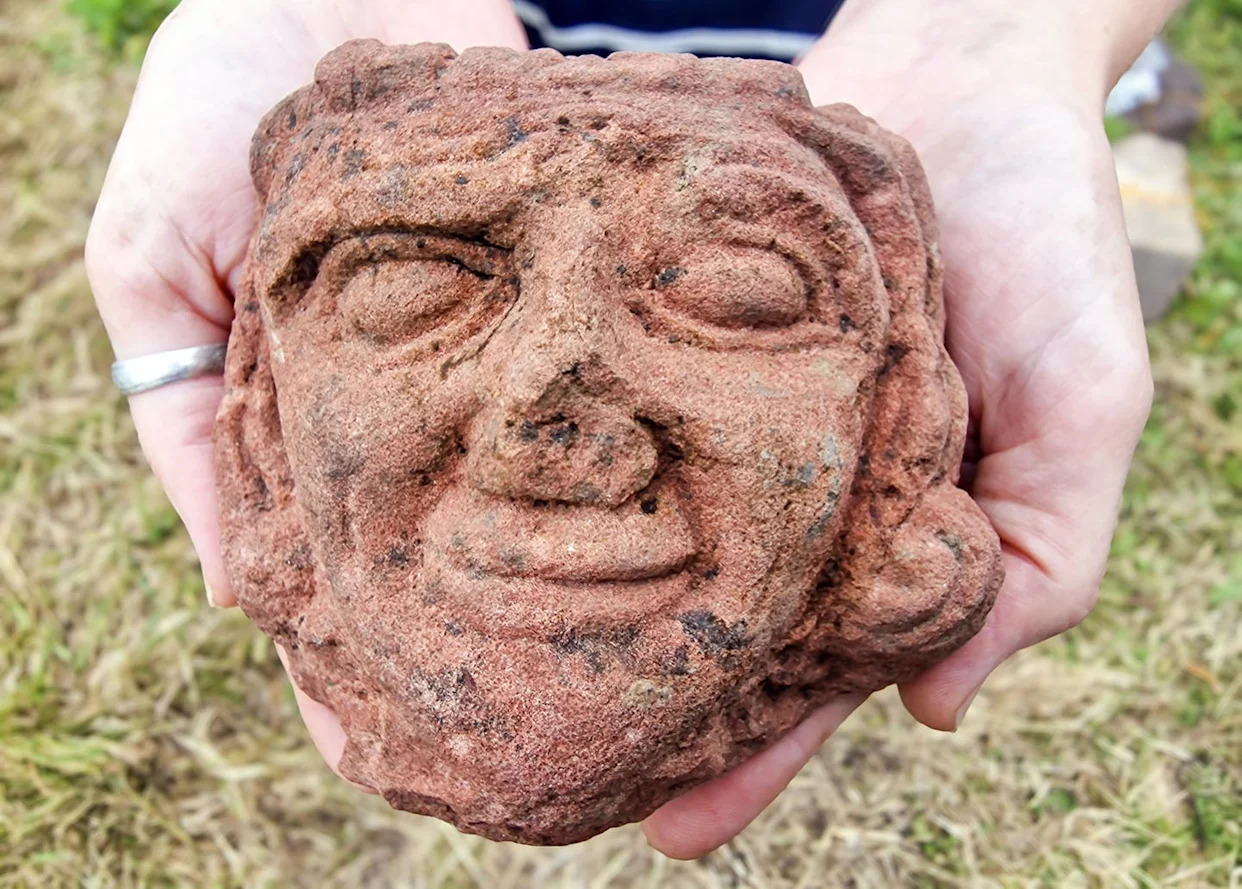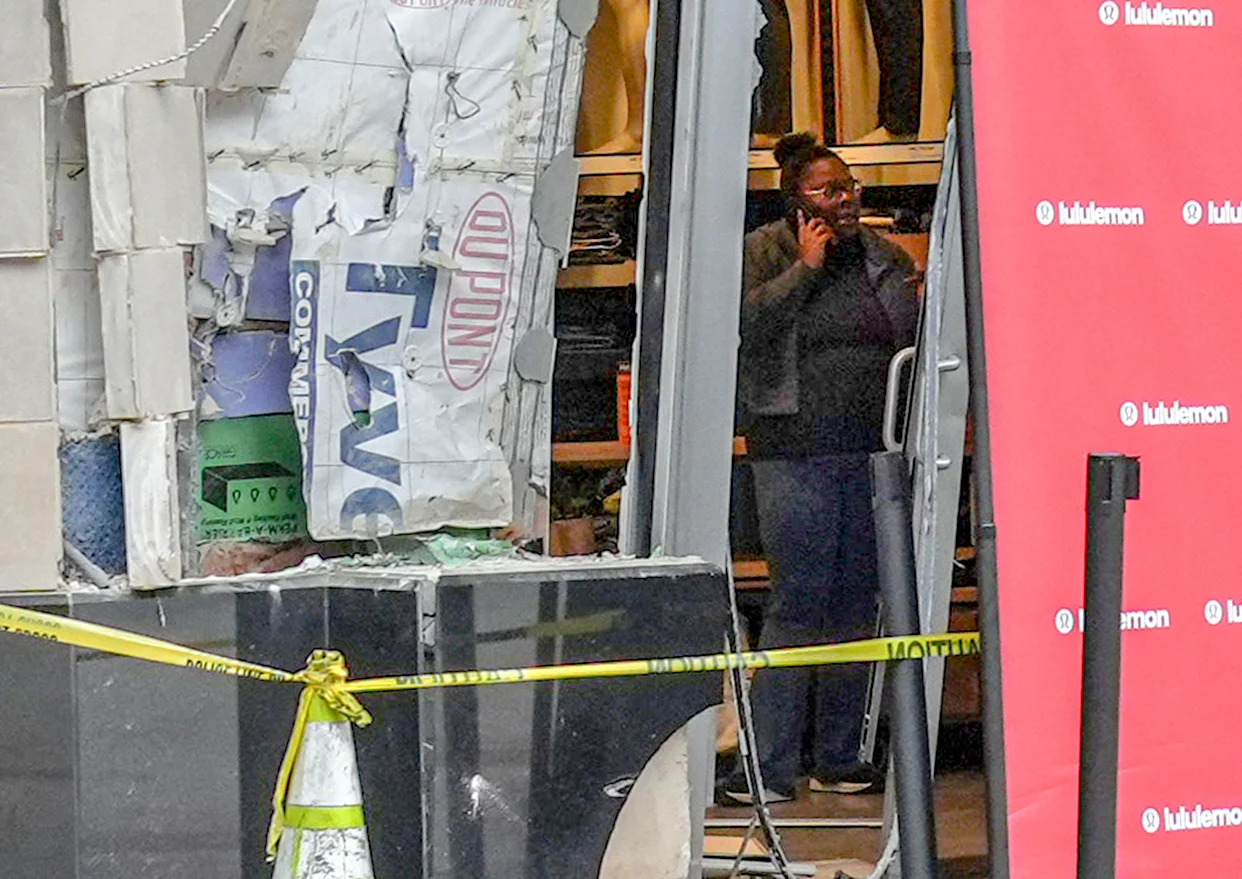
"Hearst Magazines and Yahoo may earn commission or revenue on some items through these links."
Here’s what you’ll learn when you read this story:
Archaeological excavations on an Orkney island in Scotland revealed a Viking-era find.
The carved red sandstone head features intricate detailing across the entire face.
The discovery may have a link to St. Magnus Cathedral, Britain’s northernmost cathedral.
Beneath the 18th-century Skaill Farm in Scotland’s Orkney archipelago sits a medieval Viking-era settlement. That settlement just revealed a face from the past.
During a dig on the Orkeny island of Rousay, a graduate student from the University of the Highlands and Islands Archaeology Institute removed a section of ancient construction to uncover a piece of sandstone. The stone stared right back, exposing a finely carved head of red sandstone with yellow inclusions, likely quarried from the island of Eday.
“This is such an exciting find,” Sarah Jane Gibbon, co-director of the Skaill archaeological dig for the Orkney Research Centre for Archaeology, said in a statement. “Over the years excavating at Skaiil and The Wirk—the nearby hall tower—we have found several interesting molded pieces of red sandstone but nothing like this.”
The piece could be more than 900 years old, tied to the Norse settlement that sits below much of the 18th-century farm. Once owned by Sigurd of Westness, a prominent Viking chieftain from the 12th century, the site features medieval buildings. For instance, in 2019, the research center discovered a Norse drinking hall (the Skaill name comes from the Old Norse word meaning “hall”).
During the recent dig, crews were excavating a two-story rectangular building with three-foot-wide walls, built in a similar style to a square building on the site that the team believes was contemporary to the late medieval farm. The newly discovered building could have been a large storehouse for the ancient farm.
As excavation removed the internal floors, student Katie Joss found the sandstone face. “We were removing a slab when the head came rolling out at us, and as we turned it around we saw a face looking back at us,” Joss told BBC. “It was really exciting.”
Gibbon said the carving looks like it was meant to be seen from the front, at a slight angle to show the front part of the top of the head “which has beautifully carved locks of hair.” The eyes appear closed, and the face features a slight smile with asymmetric eyebrows to “express real character.”
The only damage on the face is a broken nose, and Gibbon wondered if it was deliberate or accidental.
The sandstone matches molded fragments from nearby St. Mary’s old parish church, but the team has struggled to find any similarities to the design. The only parallel found in size and form was from nearby Kirkwall’s St. Magnus Cathedral—the northernmost cathedral in Britain and built by the Earl of Rognvald, a friend of Sigurd of Westness.
At the Kirkwall cathedral, the team located a window frame on the south side featuring a carved face with a curl of hair like the one found at Skaill. The cathedral curl is on the left side of the face, while the Skaiil face’s curl is on the right, almost as if done as mirror images.
“We think we are standing on the hall that Sigurd built and lived in, which then became a late medieval farmstead,” Dan Lee, excavation co-director and archaeologist at the institute, told BBC. “We think this was a real seat of power in that period.”
The team plans to continue researching the carving, comparing it to St. Magnus Cathedral finds and hoping to come up with new interpretations as to its origin story.
“For now, the Skaiil head must remain a fascinating enigma in terms of date, origin, and use,” Gibbon said, “but its discovery, along with many other fine pieces of carved red sandstone, as well as those built into the nearby old parish church of St. Mary, strongly suggest a building of some splendor once stood in the vicinity.”
You Might Also Like







Comments